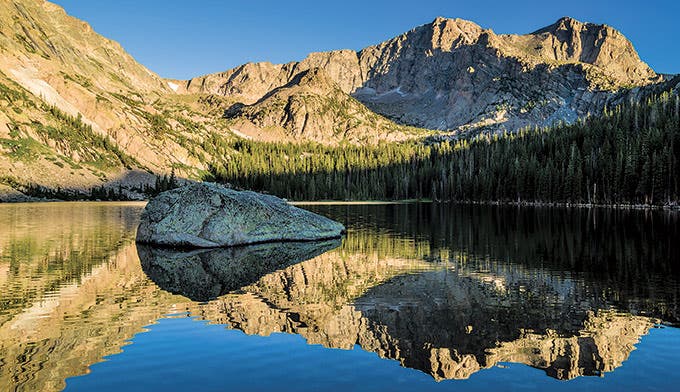Rocky Mountain National Park Weather Almanac

'Ben Fullerton'

Rocky Mountain National Park is open 24/7/365, but it’s a very different place in January than it is in July. Every day of the year presents a new face of the park, and visitors will find plenty to enjoy, no matter which season they choose for their visit. That said, it pays to know the highlights, benefits, and limitations of each season when planning your trip.
Spring in Colorado’s Rocky Mountains
The calendar may say springtime, but much of Rocky Mountain NP remains in a winter slumber in March, April, and May. March is typically the snowiest month of the year in Colorado, and it’s not unusual for the white stuff to fall later in the spring, too, at any elevation. That, combined with the longer days of spring, make this a prime time for snow activities, like snowshoeing or cross-country skiing.
Wildflower season picks up in the lower elevations (8,000 to 9,500 feet) from mid-April to May. Bighorn sheep begin to congregate at Sheep Lakes in May. And because Trail Ridge Road opens to bicycles before cars, spring is an excellent time to test your lungs on this epic ride. Most campgrounds and park roads will still be closed in spring; Trail Ridge Road opens to vehicles in late May.
Summer in Colorado’s Rocky Mountains
June through August bring melted-out trails (the higher the elevation, the longer this takes—the highest trails may not melt until August, if at all), abundant wildlife at all elevations, high country wildflowers in bloom from mid-July to August, and full services in the park and surrounding towns. It’s also the season of long lines at the park entrance stations, quick-to-fill campgrounds, and afternoon thunderstorms. Still, there’s plenty of solitude once you strike out on the trails, and hiking to a deserted lake or alpine meadow on a bluebird August day belongs on everybody’s life list.
Fall in Colorado’s Rocky Mountains
Many locals say fall is the best time of year in the park: Fewer crowds, more stable weather, active wildlife, and fall colors make the off-season a fantastic time to visit. Temps can vary widely, from very cold to pleasant, and it’s generally dry (though you should be on the alert for snow).
Wildlife lovers shouldn’t miss watching the elk gathering in low-elevation meadows for the mating season (aka rut). Bull elk begin herding large groups of females into “harems” in September; visitors to popular spots like Elk Meadows and Moraine Park may see hundreds at a time. And if you’re lucky, you might even witness bull elk locking antlers in a tussle for mating rights.
Aspen put on their bright fall foliage beginning in mid-September, sprinkling the mountainsides with pops of yellow and gold. Hike nearly any trail in the park for an up-close look at the aspen groves, or drive Trail Ridge Road (usually open until mid-October) for the big-picture view.
Winter in Colorado’s Rocky Mountains
During this quiet season, the park gives way to snow, bitter cold, and sometimes-howling winds. Campgrounds and many roads close, and only the well-prepared venture out onto the park’s trails. Join them, and you’ll be in for an unforgettable foray into a winter wonderland.
The west side of the park is best for skiing and snowshoeing, thanks to heavier snowfall and the wide, flat Kawuneeche Valley. Good winter trails can also be found on the east side (we love snowshoeing to Mills Lake), and when snow levels permit, you can sled at Hidden Valley. Many wildlife, such as moose and elk, remain active. Caveat: Be prepared for very cold weather and winter driving conditions.